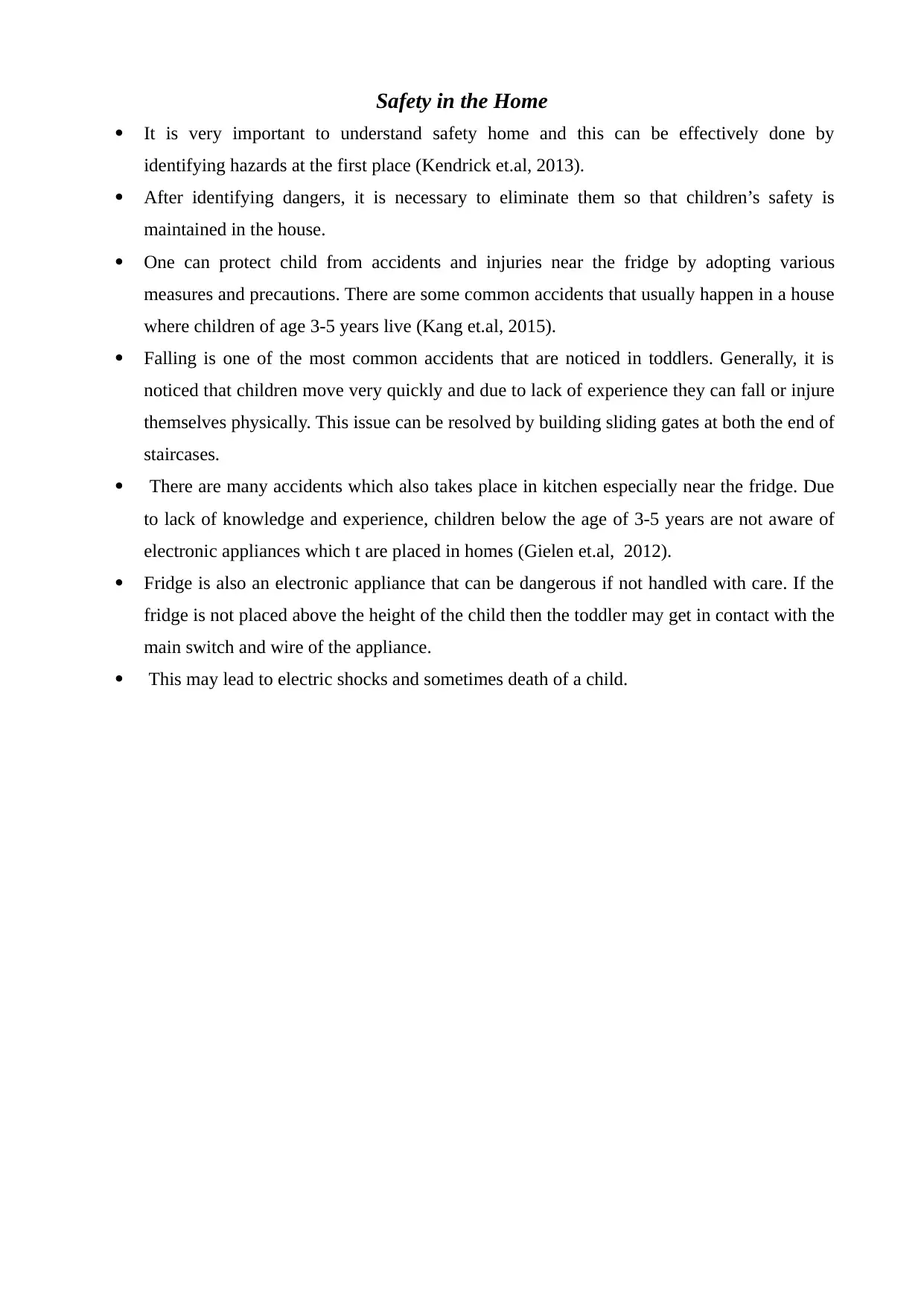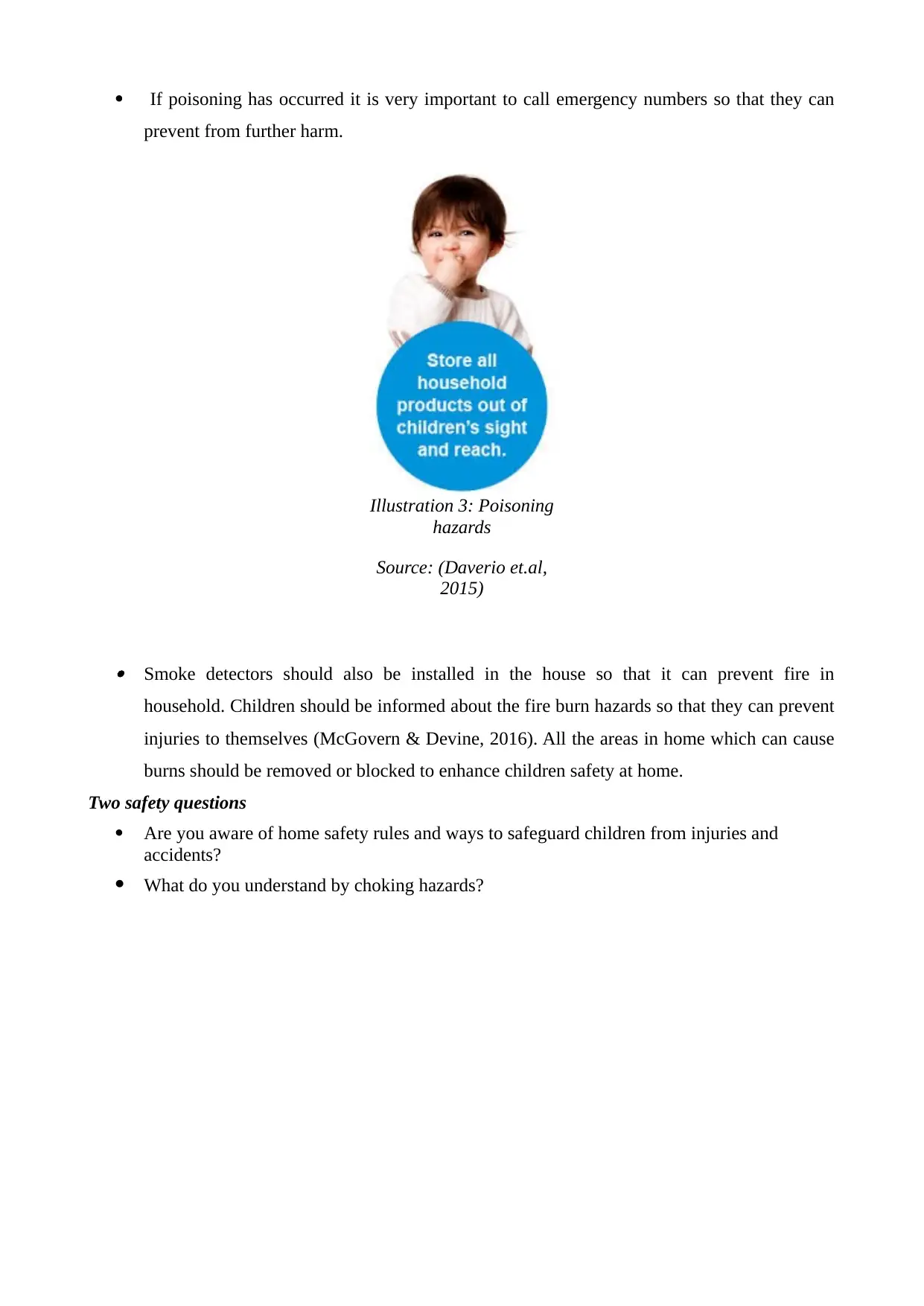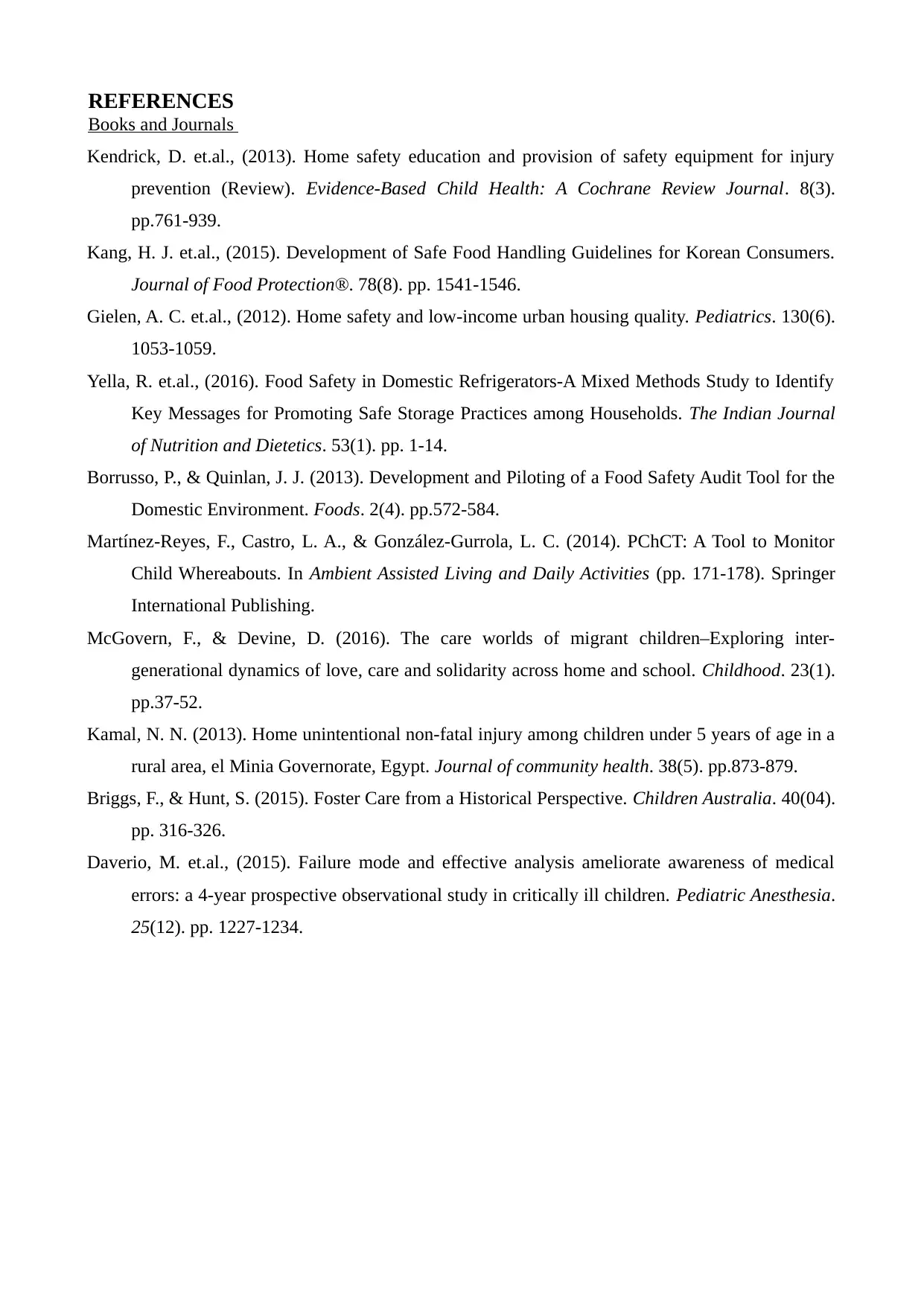Home Safety: Fridge Hazards and Safety Tips for Children Aged 3-5
VerifiedAdded on 2020/02/14
|5
|1032
|204
Presentation
AI Summary
This presentation discusses the importance of home safety, particularly focusing on potential hazards associated with refrigerators for children aged 3-5. It emphasizes identifying and eliminating dangers to prevent accidents and injuries. Common accidents like falls and kitchen-related incidents, especially near the fridge, are highlighted. The presentation notes that children lack awareness of electronic appliances and potential risks such as electric shocks from mishandling fridge wires or consuming medicines stored inside. Choking and poisoning hazards from household items kept in the refrigerator are also addressed. The presentation suggests measures like installing sliding gates on staircases, keeping the fridge locked, supervising children, and installing smoke detectors. It concludes with two safety questions to promote awareness and encourages readers to seek emergency help in case of poisoning. The provided illustrations highlight electrical, choking and poisoning hazards. The presentation adheres to APA referencing style, utilizing nursing journals and health promotion materials from reputable sources.
1 out of 5












![[object Object]](/_next/static/media/star-bottom.7253800d.svg)